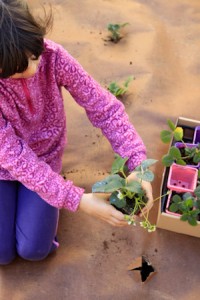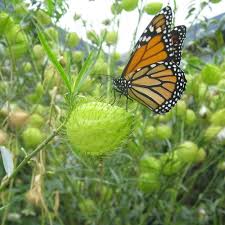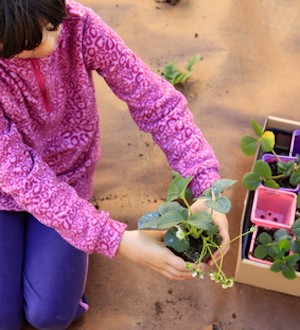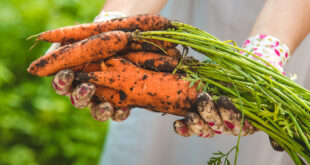 Kids love to be outside. It’s a great place to play learn and blow off plenty of steam. ‘Old fashioned’ outdoor play develops motor skills, improves their mood and teaches them about life beyond a flickering screen. Alongside general play, try giving your children their own piece of garden to attend – it’s fun and educational.
Kids love to be outside. It’s a great place to play learn and blow off plenty of steam. ‘Old fashioned’ outdoor play develops motor skills, improves their mood and teaches them about life beyond a flickering screen. Alongside general play, try giving your children their own piece of garden to attend – it’s fun and educational.
The garden is not only a wonderful place for kids to be kids, but at the same time they learn about growing healthy and fresh food. They also get the message about the benefits that come from putting in a little bit of effort.
While some children may be disappointed to learn that toffee apples do not grow on trees, those who persevere beyond such initial disappointments will find huge rewards. Children who garden love their greens and their enthusiasm will rub off on the whole family!
The first thing about starting a children’s garden is that it should be proportional to the size of the child – small – and it should be full of interesting plants that are easy to grow.
Pretty much the same rules apply to a kids’ garden as for a big-person’s plot: good fertile soil, a warm sunny spot, and access to water. We recommend a raised garden, because it’s easier to dig with a plastic spade – and to a child it probably looks more like a sandpit than a work site!
According to our oily rag letter writers, the trick is to get children involved from the very start. That includes talking about what sort of garden you should have, how big it should be, selecting the timber for the frame, putting down the weed barrier, dumping the soil, making compost, organising the worm farm if you want one, selecting what to grow and where and when to plant, when to pick, and best of all how to prepare it all for eating.
The garden only needs to be about a metre or so square, or maybe a little more, so make the frame about a metre by a metre – or say make it long and narrow (a couple of metres by half a metre, but depending on what spare or free timber you can locate) – so little hands attached to short arms do not have a problem reaching in. You could also used edging like stones, punga or other logs, bricks and the like, if you do not have any timber handy.
Use compost that is light and easy to work. Mix in some fertiliser like sheep pellets (no putting in your mouth please!).
A kids’ garden should be fun as well as a productive, so we like the idea of planting things in addition to vegetables. Big, bright, happy, sunflowers are fantastic. Use the bigger varieties that grow up to 3 meters tall and have heads 25 cm across. Plant the seeds directly into the soil.
 Swan plants are also great – they are a full nature study in themselves, to see the caterpillars transform into monarch butterflies.
Swan plants are also great – they are a full nature study in themselves, to see the caterpillars transform into monarch butterflies.
As far as vegetables go, try silverbeet, carrots, lettuce, beans, peas, courgettes, and cherry tomatoes that can be eaten whole by small mouths.
For herbs try mint (kids love the smell), parsley, rosemary, and thyme. Add mint from the kids’ garden and a slice of lemon to a cool jug of water and you can delete fizzy drink from your weekly shopping list!
A reader has sent in an interesting activity for kids. She says they grew vegetables in a bottle. Here’s how it was done. “We took an empty two litre plastic fizzy drink bottle and poured about 75mm of top soil mixed with compost into the bottom. We then dropped in some runner bean seeds and used a thick bamboo stick to push the seeds under the soil but against the side of the bottle so we could see them sprout and grow. The bamboo stick was then push into the soil and left to stick out of the top. In no time at all the beans sprouted and grew up the bamboo and out of the bottle. It was really cool to watch. We tried the same thing with cucumbers and leaf lettuce. We had to cut the plastic bottle open to get to the greens, which made them even more delicious when eaten!”
By Frank and Dr Muriel Newman.
Read more Oily Rag articles here.
You can contact the Oily Rag community via the website at oilyrag.co.nz or by writing to Living off the Smell of an Oily Rag, PO Box 984, Whangarei.










Join the Discussion
Type out your comment here:
You must be logged in to post a comment.